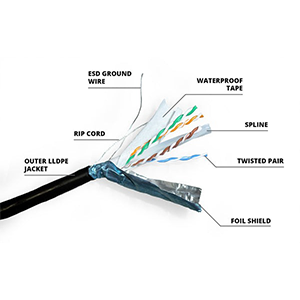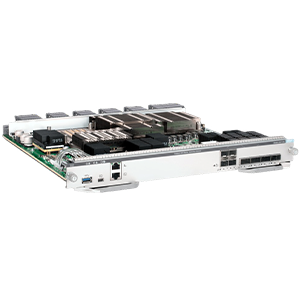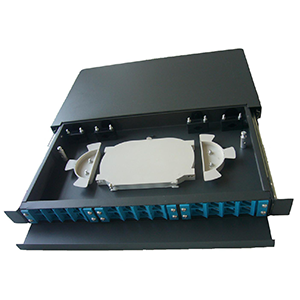Hello everyone! In enterprise networks, Cisco Catalyst series switches are highly respected for their excellent performance and wide range of application scenarios. This article will focus on the main applications of Catalyst switches in the access layer, aggregation layer, and core layer to help you better understand how these switches play a key role at different levels.
Whether it is providing high-speed access for terminal devices or achieving high bandwidth and low latency in the backbone network, Catalyst switches perform well. Understanding these application scenarios will help you design and optimize network architecture more efficiently. If you want to improve network performance or find a switch that suits your business needs, please feel free to contact me. We will provide you with tailored solutions to ensure that your network system is in the best condition!
Introduction to Cisco Catalyst Switch Series
The Cisco Catalyst switch series provides enterprise-class network solutions, including access layer, aggregation layer, and core layer switches. The series supports high-performance Ethernet connections, advanced security features, and network management. Models range from the basic 2960 series to the high-performance 9000 series, meeting the needs of networks of different sizes and complexities, and are widely used in enterprises, data centers, and branch offices.
1. Positioning of the Catalyst switch series:
- The Cisco Catalyst switch series covers a variety of models from low-end to high-end.
- These switches are widely used in various network environments from small and medium-sized enterprises to large enterprises.
2. Common features of the Catalyst switch series:
- Support for a wide range of network functions and services:
- Catalyst switches provide a wide range of Layer 2 and Layer 3 switching functions.
- Support for a wide range of network services such as VLAN, spanning tree protocol, and DHCP relay.
- Provide high performance and reliability:
- Catalyst switches use high-performance hardware and software architecture.
- Able to provide high-throughput, low-latency forwarding performance.
- With excellent stability and availability.
Whether it is a small or medium-sized enterprise or a large enterprise, the Cisco Catalyst switch series can provide suitable product choices. They are not only feature-rich, but also have excellent performance, making them an ideal choice for building enterprise network infrastructure.
Application of Catalyst switches in the access layer
The application of Catalyst switches in the access layer includes providing Gigabit Ethernet connections, supporting PoE-powered devices (such as IP cameras and wireless access points), and implementing network segmentation and traffic management. They provide stable network access, enhanced security and simplified management, suitable for the network environment of small and medium-sized enterprises and branches, ensuring efficient connection and reliable operation of devices.
1. Typical applications of Catalyst switches in the access layer:
- Provide high-speed wired access for terminal devices:
- Catalyst access switches can provide high-speed Ethernet access for various terminal devices such as PCs, IP phones, printers, etc.
- Ensure that terminal users have a good network experience.
- Support PoE power supply to meet the needs of terminal devices:
- Some Catalyst access switches have PoE power supply function.
- It can provide power for PoE devices such as IP cameras and wireless APs to simplify deployment.
2. Key features of Catalyst access switches:
- Flexible port density and transmission rate:
- Catalyst access switches provide 24 or 48 10/100/1000Mbps Ethernet ports.
- Can meet access networks of different scales and bandwidth requirements.
- Support advanced features such as security and QoS:
- Catalyst access switches have rich security features, such as 802.1X authentication, port security, etc.
- Provide complex QoS policy configuration to ensure the priority of key business traffic.
In general, the Cisco Catalyst switch series plays an important role in the enterprise access layer network. They can provide high-speed, secure and reliable Ethernet access for terminal devices, and support flexible power supply methods such as PoE, which is an ideal choice for building enterprise access networks.
Application of Catalyst switches in the aggregation layer
The application of Catalyst switches in the aggregation layer includes connecting access layer switches and core layer switches, providing high-bandwidth and low-latency data forwarding. They support a variety of high-speed interfaces, traffic management and advanced network services such as QoS and routing. Suitable for medium and large enterprises and data centers, ensuring efficient aggregation of network traffic, optimizing network performance and achieving stable data transmission.
1. Typical applications of Catalyst switches in the aggregation layer:
- Provide highly reliable and high-bandwidth backbone connections:
- Catalyst aggregation switches usually use redundant uplinks to improve network reliability.
- Support high-speed uplink interfaces, such as 10GbE and 40GbE, to meet the bandwidth requirements of the backbone network.
- Aggregate access layer switch traffic:
- Catalyst aggregation switches aggregate traffic from access layer switches and connect them to the core layer.
- Provide aggregated traffic to the core layer.
2. Key features of Catalyst aggregation switches:
- Support high-speed uplink interfaces:
- Catalyst aggregation switches provide 10GbE and 40GbE high-speed uplink interfaces.
- Can meet the bandwidth requirements of large-capacity backbone networks.
- Provide powerful switching capacity and forwarding performance:
- Catalyst aggregation switches have a switching capacity of up to hundreds of Gbps.
- Can forward large amounts of aggregated traffic at line speed.
In general, Cisco Catalyst switches play an important role in the aggregation layer of enterprise networks. They can provide highly reliable, high-bandwidth backbone connections and aggregate the traffic of access layer switches to meet the performance requirements of enterprise network backbones. With their powerful performance and functional features, Catalyst aggregation switches are key components for building enterprise high-performance network infrastructure.
Application of Catalyst switches in the core layer
The application of Catalyst switches in the core layer includes serving as the core switching point of the network, providing high throughput and high-speed forwarding. They support high-bandwidth, high-reliability network connections to ensure the stability and scalability of data centers and enterprise networks. Core layer switches also support complex routing protocols, redundant configurations and high availability to meet the performance and redundancy requirements of large-scale networks.
1. Typical applications of Catalyst switches in the core layer:
- Provide ultra-high-speed, low-latency network backbone:
- Catalyst core switches use high-performance hardware and advanced technology to provide ultra-high-speed network backbone connections.
- Ensure low-latency transmission of key business applications of the enterprise.
- Connect aggregation layer switches and routers:
- Catalyst core switches are located in the core layer of the network, connecting aggregation layer switches and routers.
- Play the role of backbone transmission of the entire network.
2. Key features of Catalyst core switches:
- Support very high switching capacity and port density:
- Catalyst core switches provide up to Tbps-level switching capacity.
- Can be configured with dozens of high-speed uplink interfaces to meet the connection needs of large-scale networks.
- Provide strong reliability and availability:
- Catalyst core switches use redundant power supplies, fans and other designs to ensure high availability.
- Support modular hardware and software upgrades to continuously meet growing business needs.
In short, Cisco Catalyst switches play a key role in the core layer of enterprise networks. They can provide ultra-high-performance network backbones, reliably connect aggregation layers and routers, and are an important part of building high-performance and high-availability network infrastructure for enterprises.
Summary
Through the analysis of the application of Cisco Catalyst series switches at different network levels, I hope you have a clear understanding of how to select and deploy these switches in enterprise networks. Whether in the access layer, aggregation layer or core layer, Catalyst switches provide strong support for enterprise networks with their excellent performance and reliability.
If you have any needs or questions, please contact us immediately. We will provide professional advice and high-quality services to help you achieve your network optimization goals. Choosing our products will make your network more powerful, flexible and efficient!
Cisco Catalyst Switch Application Scenario FAQ
Cisco Catalyst switches are primarily used in enterprise network environments, providing high-performance switching for LANs (Local Area Networks), campus networks, and data centers.
Yes, Cisco Catalyst switches, especially models like the 2960-X or 1000 Series, are suitable for small and medium-sized businesses due to their scalability, ease of management, and cost-effectiveness.
Yes, Cisco Catalyst switches are used in data centers for aggregating and managing large volumes of traffic, supporting virtualization, and optimizing workloads. Higher-end models, such as the 9000 Series, are often employed in these environments.
Cisco Catalyst switches that support PoE and PoE+ are ideal for applications that require powering network devices such as IP phones, wireless access points, and security cameras without separate power sources.
In campus networks, Cisco Catalyst switches are used to connect buildings, departments, or floors, offering high-speed connectivity, access control, and network segmentation across a large geographical area.
While Cisco Catalyst switches are designed mainly for enterprise environments, ruggedized versions like the Catalyst IE switches are specifically built for industrial networks, providing reliable connectivity in harsh conditions.
Yes, Cisco Catalyst switches, especially the Catalyst 9000 series, are optimized for cloud-based architectures and offer seamless integration with cloud services, providing high availability, automation, and security.
Cisco Catalyst switches support wireless LAN controllers and access points by providing the necessary bandwidth, PoE power, and network management tools, making them crucial for reliable and scalable wireless networking.
Cisco Catalyst switches provide advanced security features such as port security, access control lists (ACLs), 802.1X authentication, and integrated threat detection, helping to safeguard network traffic and prevent unauthorized access.
In multi-tenant or virtualized environments, Cisco Catalyst switches can manage segmented traffic through VLANs and support Quality of Service (QoS) to ensure each tenant or application receives the appropriate bandwidth and security.




